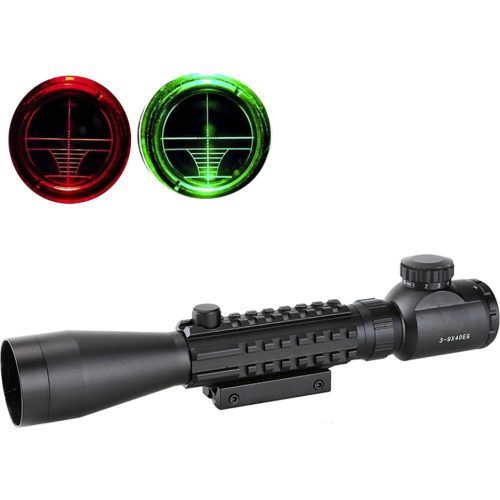Every normal man loves firearms and has a passion for weapons since childhood. If possible, he will never pass by a real weapon. Even just to touch, feel cold steel and hidden power. Holding a gun or rifle in his hands, a man feels like a fighter, hunter, protector. This adds strength and strength to him.
Therefore, in our time, it is not uncommon for men to take up arms and go to the shooting range, to the shooting range or to hunt. And not for the sake of prey (although every woman will always be happy with food obtained by her man). Mainly to feel the power and unstoppability of a firearm. Thus, he realizes the very instinctive desire that is in the blood of every real man.
Weapons can be smooth-bore or rifled, double-barreled or semi-automatic, but the "next level" of weapon communication is when the rifle has a telescopic sight.
Remember the movie "Sniper" with Tom Berenger? He could easily hit the enemy from a kilometer distance using an optical sight. Optics are the advantage of any firearm. This is the additional power of the weapon, which allows you to hit targets from cover and from distant approaches, at a great distance, with enviable constant accuracy.
The novice hunter imagines himself with a rifle with a large telescopic sight on it. Not bad. However, this is not always and not always appropriate. If you like to hunt game or bird in reeds, you definitely don't need a telescopic sight. A good shotgun and a dog are enough.
If, however, you still decide to expand your range at the expense of an optical sight, you need to learn a few simple truths.

Optical sights are available with constant and variable magnification
Usually used for shooting from a certain distance. This type of optical sight is suitable, for example, for hunting from a tower or a permanently equipped place. Generally, from an ambush. The designs of such scopes are reliable and practical, as they consist of a small number of parts and there are practically no moving parts.
Variable Scopes
For example, riflescopes with low magnification - they are "corrals" or corral optical sights. The magnification factor of such scopes is from one to four (1-4) or 6x (not always good). This is the optimal ratio, although a single increase is quite suitable for driven hunting, maximum 1.25. This telescopic sight is also good when aiming with two eyes, because it is practically not inferior to a collimator sight.
Typically, the diameter of the lens of driven sights is recommended to be used from 20 to 24 millimeters. Here, the opinions of hunters differ - for someone at short distances it is inconvenient, for someone it suits, but in a multiplicity of up to 2x. There is no consensus. Alternatively, you can use a lens diameter of up to 40 mm, but we warn you right away - the cost of such scopes is already significantly different, in some models at times.
A driven sight has an advantage over sights with a large magnification due to a small step of changing the magnification and working at short distances - sometimes the speed of movement of the hunting object is very high and the ability to keep it out of sight is much more important than the distance to it. With a minimum magnification of the sight, it is possible to achieve conditions when shooting will be done quickly and accurately.
In turn, we would recommend you the following types of low magnification optical sights: 3-9x, 2-10x, 2-8x
It is worth paying your attention to the illumination of the reticle. In conditions of thickening twilight or dense vegetation, it will be very useful. In some scopes, only a dot is illuminated, which makes them similar to red dot scopes.
The disadvantage is that with a small lens diameter the aperture decreases. That is, at dusk or in low light, using such a sight is ineffective. Not suitable for long range shooting.
Do not forget about collimator sights as driven sights, as they are very effective at short distances (up to 200 meters). It is better to have a closed-type collimator with a single or double magnifying attachment. These scopes are very suitable for beginners. Especially those with smooth-bore guns.
It is possible to use tactical collimator sights with constant magnification 3x or 4x. This is the best option that is suitable for driven hunting for both elk and wild boar. However, it requires certain skills from hunters.
As a summary
for driven hunting, a small magnification of the sight is fundamental.
The scope should be compact and lightweight for ease of movement.
Collimator sights are most suitable for beginners for hunting from a minimum distance. For experienced hunters - optics.
